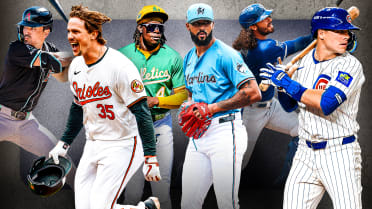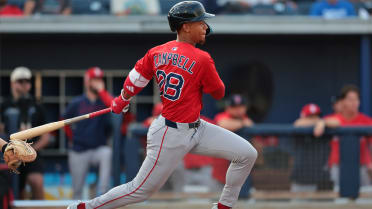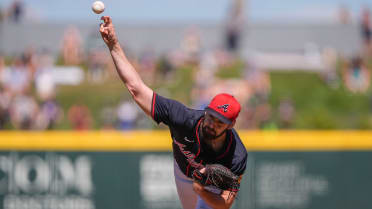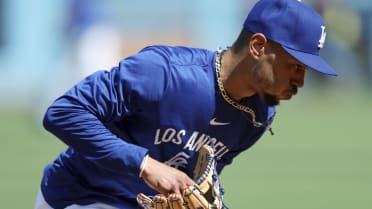Get ready for it. The designated hitter could be coming to a National League park near you. And it may happen sooner, rather than later.
The NL traditionalists aren't going to like it. It is, however, just another step in the constant reshaping of the national pastime.
Hey, the idea of a DH goes back before there were numbers on the backs of uniforms and lights in stadiums, before pitching mounds were lowered from 15 inches to 10 inches and before uniform pant legs were allowed to dangle down to the top of cleats.
• Could the DH be in the National League's future?
The DH is an idea that Connie Mack, a Hall of Fame manager/executive, first proposed in 1906. NL president John Heydler thought he had the NL convinced to adopt the plan in '29, only to come up short.
Now, the DH wasn't adopted in the big leagues until 1973, and even then only by the American League. The NL has turned up its nose at the idea of adding the DH. The league hasn't even given it serious consideration since a vote on Aug. 13, 1980.
But the DH is now accepted in every significant league from the high school level through the professional level -- except the NL and Japan's Central League. In Double-A and Triple-A, NL teams are allowed to have pitchers hit, but AL teams use the DH, and the DH is required by all teams at levels lower than those.
This weekend, however, came the first public hint that things could be changing -- the first hint since that NL vote in 1980 fell short, in part because of a miscommunication between Phillies brass that led to the Phils and Pirates, who were going to vote with the Phillies, to abstain.
Cardinals general manager John Mozeliak said, "I do feel like there were times when I could look all you in the face and say it's a non-starter, it's not being discussed at the owner level or [among GMs], but over the past year, it has [been]. I'm not suggesting you're going to see a change, but I definitely think the momentum has changed."
Now understand, Mozeliak isn't announcing that a change is coming.
"I took his comments a little more generally," said Giants general manager Bobby Evans. "There has been more talk publicly. That the public is speaking out on it."
Some of that talk has been spurred by recent injuries to pitchers, including Cardinals pitcher Adam Wainwright, who was sidelined in late April with a torn Achilles tendon suffered during an at-bat.
"I know it is on the agenda every meeting," said Hall of Fame manager Tony La Russa, now the chief baseball officer of the Arizona Diamondbacks. "For a long time, people have discussed the need for one set of rules for both leagues. The purist wants the National League to maintain, but the young fan wants more runs scored."
There is a viable reason that the discussions on the DH could become a bit more serious in the coming months.
The current Basic Agreement between the owners and Major League Baseball Players Association expires after the 2016 season. Both sides have enjoyed unparalleled financial success, but there will be posturing, particularly in light of MLB having a new Commissioner, Rob Manfred, and the MLBPA having new leadership, led by former player Tony Clark.
The DH in the NL could become a bargaining chip the players could be offered in an effort to get adjustments in the schedule or even look for ways to add some restraint on arbitration. It does, after all, provide increased longevity for veteran players, like Boston's David Ortiz, who are limited physically in regards to playing in the field but can still provide offensive production.
And in an age when offense grabs the attention of fans, the numbers support the claim that the DH adds to offense and gives the AL an upper hand when the teams from the two leagues play. The AL has won 24 of the 42 World Series since the adoption of the DH in the AL, and the AL has a winning record in Interleague Play in 15 of the 19 years of its existence, including each of the past 12.
The AL has outhit the NL, .264 to .258, in its 43 years with the DH, and the AL has compiled 19 of the top 21 seasonal batting averages since 1983.
La Russa said he could see support for the DH in the NL emerging from the growth of analytics, which don't emphasize manufacturing runs. The importance of sacrifice bunts and stolen bases have been lessened with the emerging sentiment that too many outs are given away in those situations.
La Russa, whose career saw him manage 1,320 games in the AL (with the White Sox and A's) and 1,408 games in the NL (with the Cardinals), enjoyed the challenges that he faced in both leagues.
"It is a tough call," La Russa said of whether it is more difficult to manage in the NL than AL. "Both leagues have their unique situations."
There is, however, a growing feeling that the uniqueness could be lessened before too long.
Tracy Ringolsby is a columnist for MLB.com.



